1.3 Wagyu Key Generation
This section explains how to generate your validator keys using the LUKSO Wagyu Key Gen tool. By leveraging a graphical interface, the process becomes more intuitive and accessible for both beginners and experienced users. The following steps walk you through downloading the software, preparing a USB device, and running the key generation process on your designated keygen computer.
1. Software Comparison
The table below compares the two available tools for generating validator keys:
| Tool | Interface | Description |
|---|---|---|
| Simplifies the staking process with an intuitive, step-by-step interface, ideal for users who prefer visual guidance. | ||
| Provides a terminal-based approach for generating keys, suitable for servers, automation and advanced users |
If you prefer a command-line approach, switch to the CLI Key Generation page.
2. Download the Software
This step prepares the key generation tool. You need to chose the correct download file for the operating system on your offline machine where you are going to generate the keys on, not the operating system of your personal computer.
- Linux, Ubuntu: AppImage-File
- Apple, MacOS: DMG-File
- Microsoft, Windows: EXE-File
The following steps are performed on your 💻 personal computer.
- Ubuntu
- MacOS
- Windows
- Visit the Official Release Page on the LUKSO Network GitHub page.
- Download the AppImage file from the Latest Release.
- Connect a USB device.
- Flash it using your preferred disk utility tool.
- Copy the downloaded AppImage onto the USB device.
- Eject the USB disk safely.
- Visit the Official Release Page on the LUKSO Network GitHub page.
- Download the DMG file from the Latest Release.
- Connect a USB device.
- Flash it using your preferred disk utility tool.
- Copy the downloaded DMG onto the USB device.
- Eject the USB disk safely.
- Visit the Official Release Page on the LUKSO Network GitHub page.
- Download the EXE file from the Latest Release.
- Connect a USB device.
- Flash it using your preferred disk utility tool.
- Copy the downloaded EXE onto the USB device.
- Eject the USB disk safely.
3. Connect to Keygen Computer
The following steps are performed on your 🗄️ offline computer.
- Connect the prepared USB device to the computer designated for key generation.
- Copy the AppImage file from the USB device to your home directory.
4. Generate Initial Keys
Follow these steps to generate your initial validator keys using the Wagyu application:
1. Launch the Application: Open your file explorer, navigate to your home directory, and execute the application.
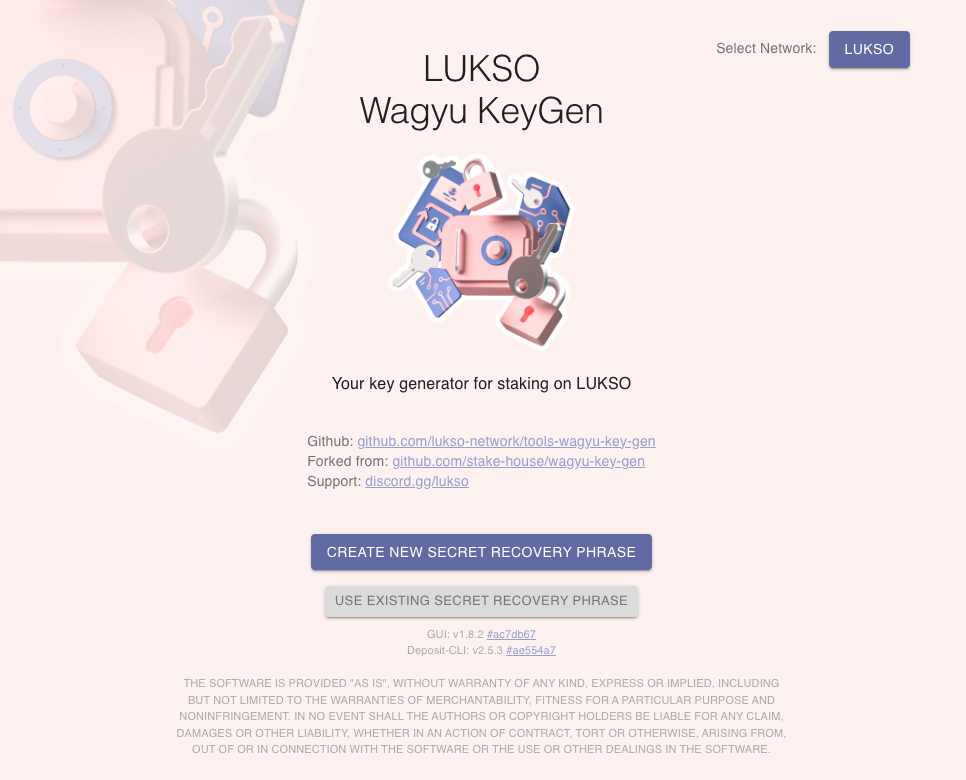
2. Select the Network: In the upper right corner, click the LUKSO button to choose between testnet and mainnet.
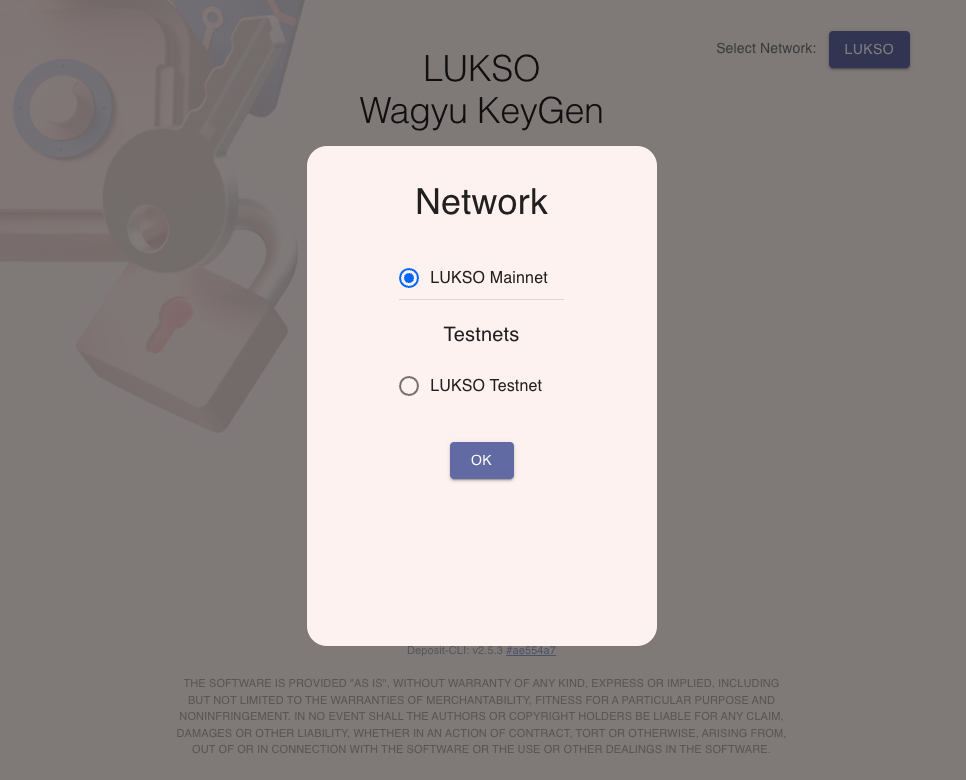
3. Initiate Mnemonic Creation: Click on CREATE NEW SECRET RECOVERY PHRASE to begin generating your mnemonic.
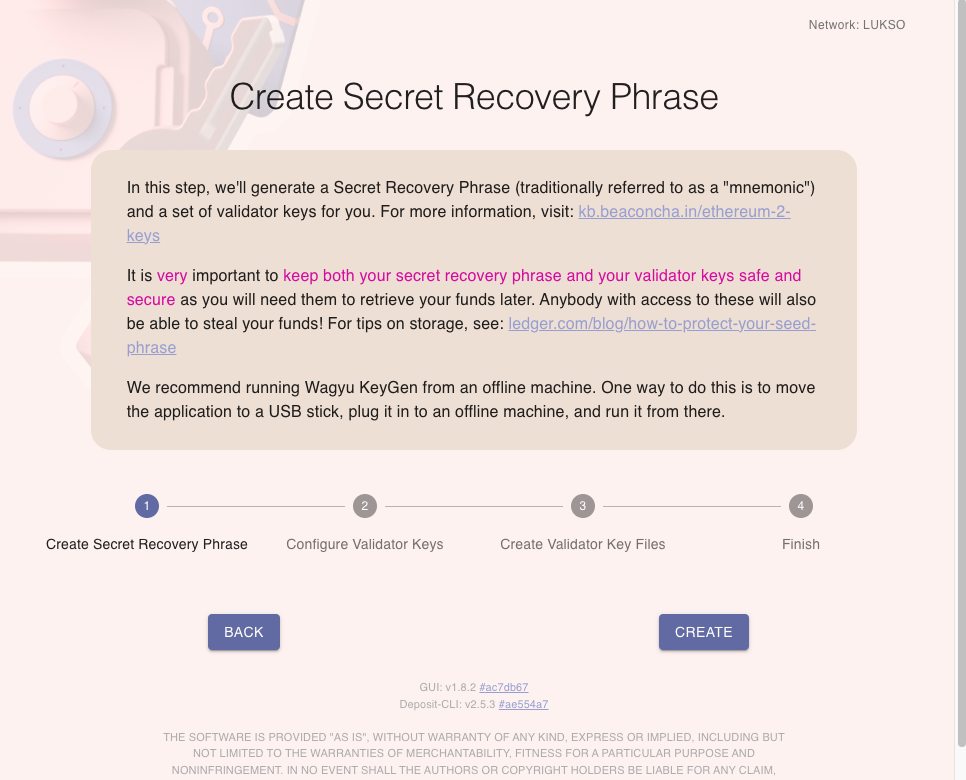
4. Generate the Mnemonic: After reviewing the displayed information, click CREATE to generate a new mnemonic.
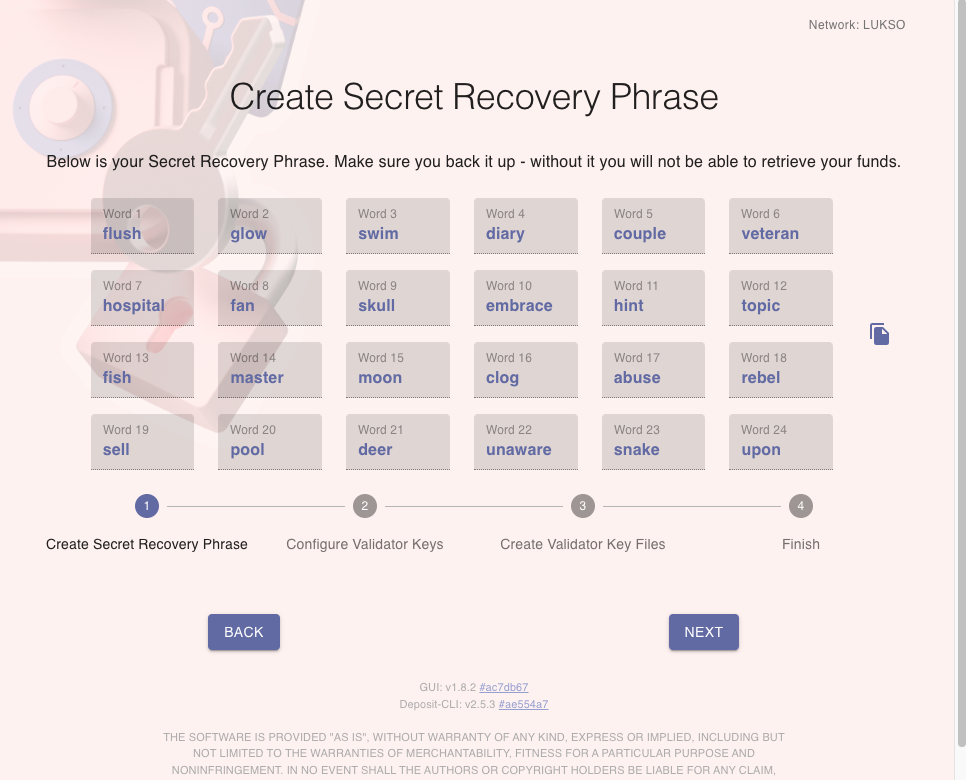
A seed phrase and a mnemonic phrase refer to the same thing: a human-readable set of words that encodes a cryptographic seed used to generate private keys. These terms are often used interchangeably depending on a more technical or more general context.
Write down your mnemonic on paper and store it securely. Do not save it digitally as plain text. Anyone with access to this seed phrase can control your deposits or slash your validator, as it can be used to regenerate your validator's private keys and sign messages on your behalf. Treat it like your most valuable secret. Never share it or store it insecurely.
5. Confirm the Mnemonic: Click NEXT and retype your saved mnemonic seed phrase to verify it.
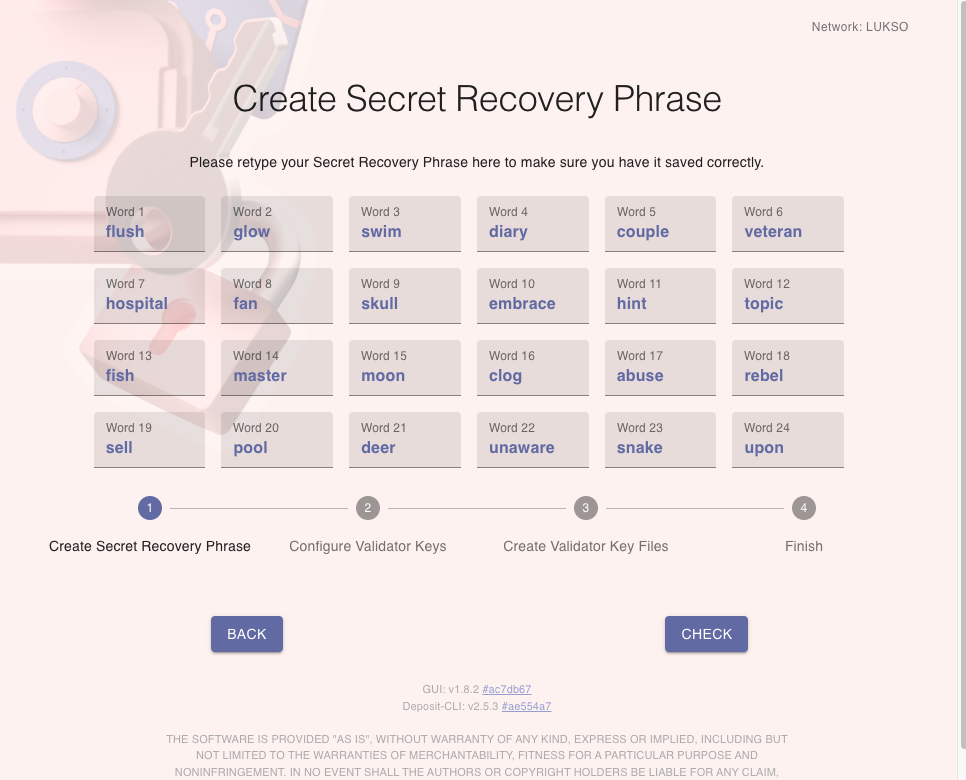
6. Verification Process: Proceed by clicking CHECK until the process confirms your mnemonic successfully.
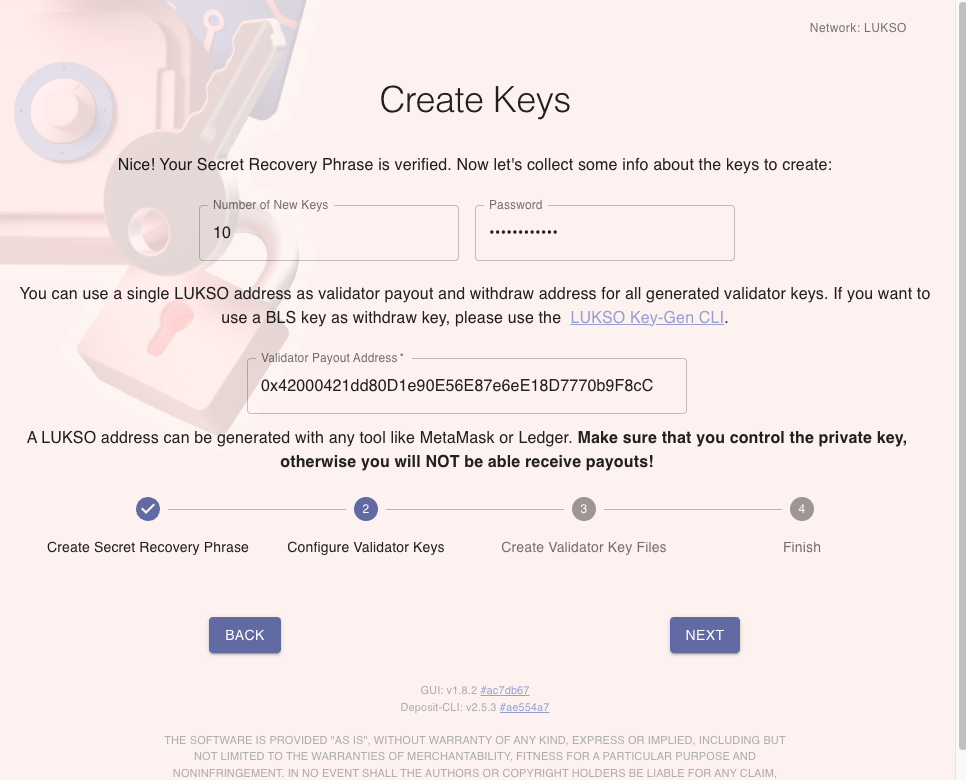
7. Enter Key Generation Details: Provide the amount of keys to generate, a password for encryption, and a withdrawal address.
You can generate more keys than you immediately fund. These keys will remain inactive until they are sufficiently funded. When generating keys in multiple rounds, you can use the same withdrawal address multiple times so all revenue goes to the same account. Further details can be found on the Tokenomics and Validator Credentials pages within the 🧠 Theory section.
If you only require deposits from a single wallet, simply complete the process once. However, if you have multiple wallets with varying amounts of LYXt, LYXe, or LYX to make the deposits with, you have two primary options:
1. Generate Batches with the Same Seed
- Generate keys for the first wallet using a new seed phrase.
- For subsequent wallets, import the existing mnemonic seed phrase and generate additional keys.
- This process produces separate
deposit_data.jsonfiles for each wallet.
🙇🏻♂️ Example: 30 validators across 3 wallets, generated 10 keys per run in different files.
2. Modify the Deposit File
- Generate all keys in a single run, creating one comprehensive
deposit_data.jsonfile. - Duplicate and modify the file and use a JSON Editor to remove
pubkeyentries, dividing keys appropriately.
🙇🏻♂️ Example: 30 validators across 3 wallets, generated 3 file copies and removed pubkey entries manually:
- Keept the first 10
pubkeyentries for wallet one. (validators 1-10) - Removed the first and last 10
pubkeyentries for wallet two. (validators 11–20) - Removed the first 20 for wallet three. (keeping validators 21–30)
In both cases, you will have to go through the Launchpad Process 3 times, as the launchpad will check if your current wallet has enough balance before you can continue to the deposit screen.
8. Generate the deposit files: Select the file destination and wait for file generation.
- Click BROWSE to select the folder where the deposit and keystore files will be stored.
- Click CREATE to generate your keys and wait for the key generation process to finish.
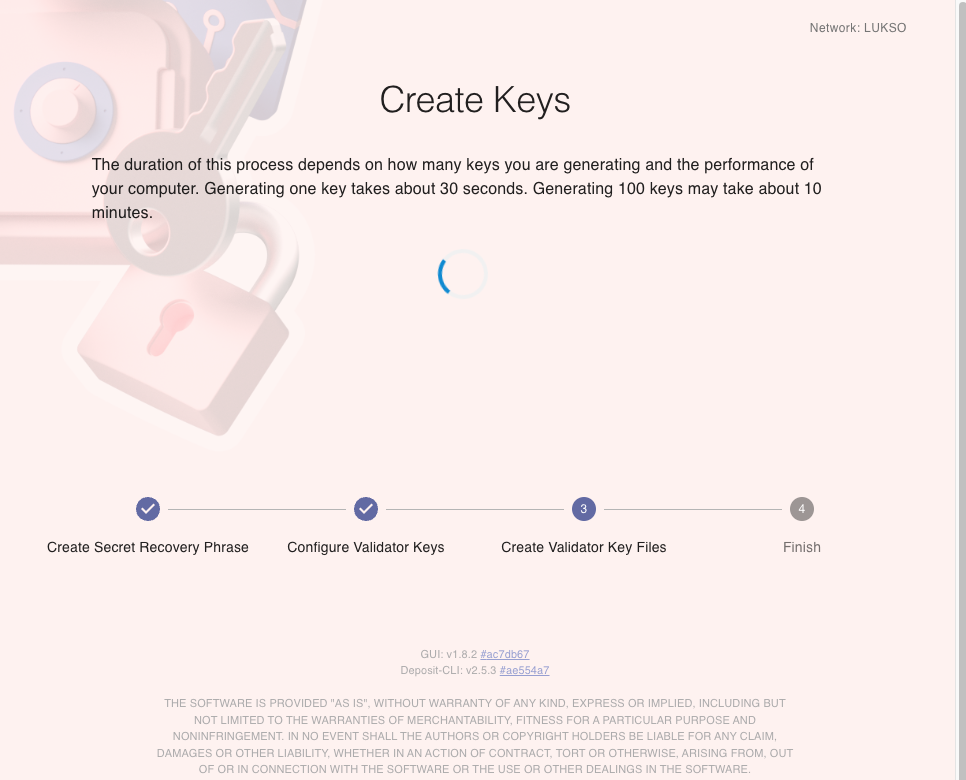
9. Review the Generated Files: Once completed, the final screen will appear and show the created files.
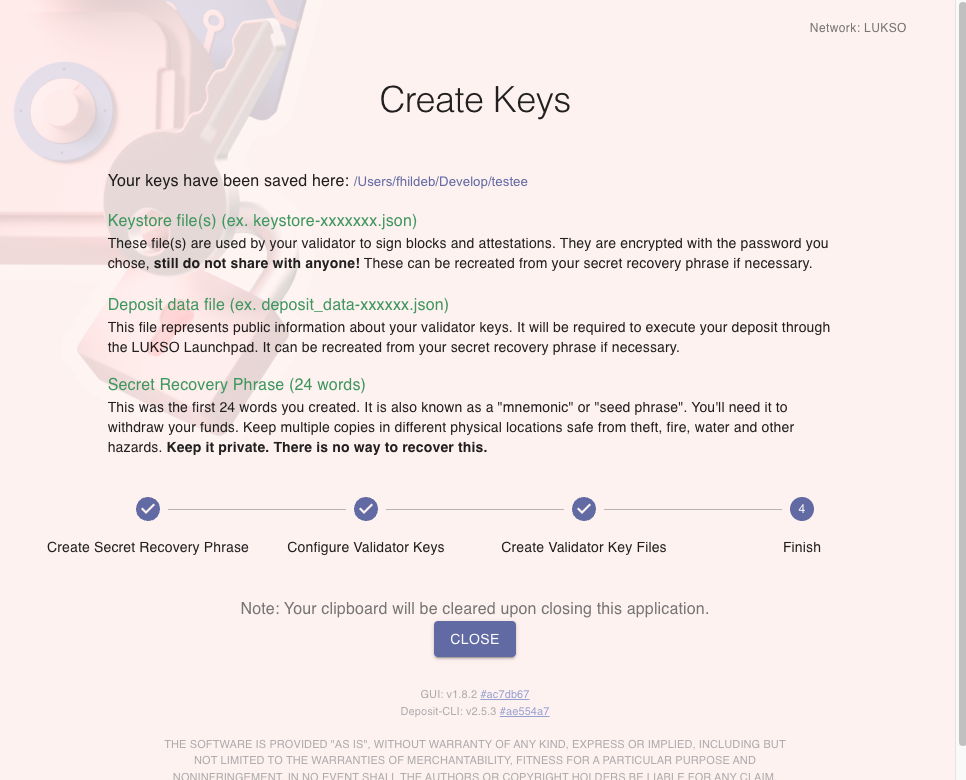
Please ensure that your destination folder contains the following files:
deposit_data.json: This file is used to make deposit transactions during the Deposit Launchpad process.keystore.json: Each validator key has a corresponding keystore file, later used in the Validator Setup.
5. Generate Additional Keys
If you need to add more stake, follow these steps to generate additional validator keys using the Wagyu application:
1. Initiate the Import Process: Click USE EXISTING SECRET RECOVERY PHRASE and select the appropriate network.

2. Import Your Mnemonic: Enter your validator seed phrase and press IMPORT to begin the key import process.
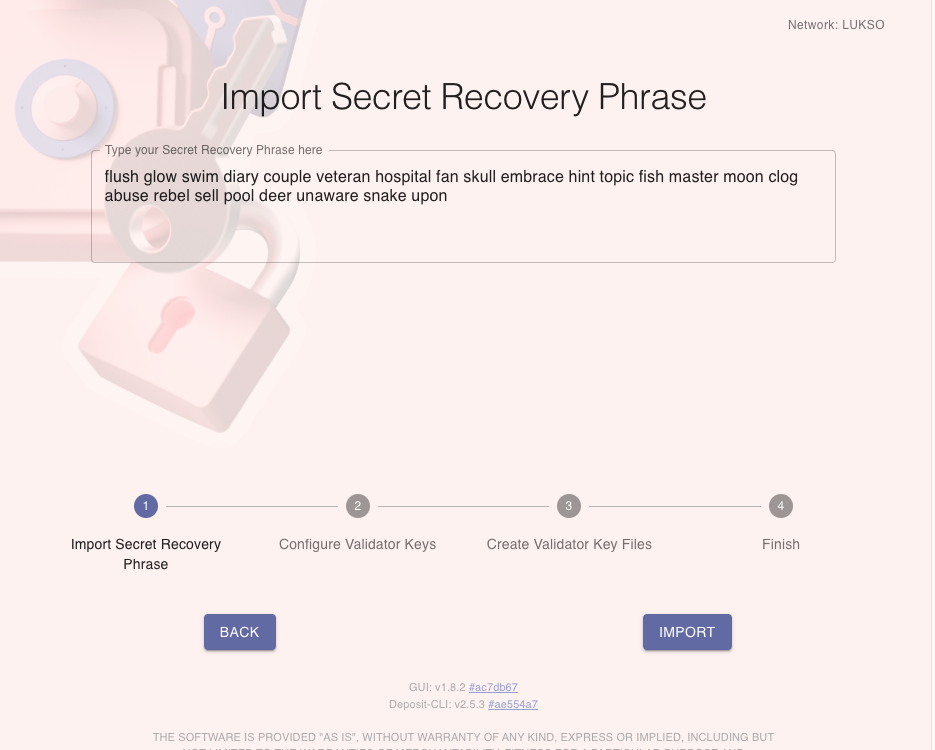
3. Set Up Additional Key Details: Specify the number of new and previously generated keys with your withdrawal address.
You can generate more keys than you immediately fund. These keys will remain inactive until they are sufficiently funded. When generating keys in multiple rounds, you can use the same withdrawal address multiple times so all revenue goes to the same account. Further details can be found on the Tokenomics and Validator Credentials pages within the 🧠 Theory section.
To regenerate keys for a backup or updating the withdrawal address or password, you can set the starting index to 0 and specify the total number of all your previously generated keys. The new files can then be re-used to setup a new node once the original one stopped operating.
4. Finalize the Additional Key Generation: Enter your previous password and select the destination folder.
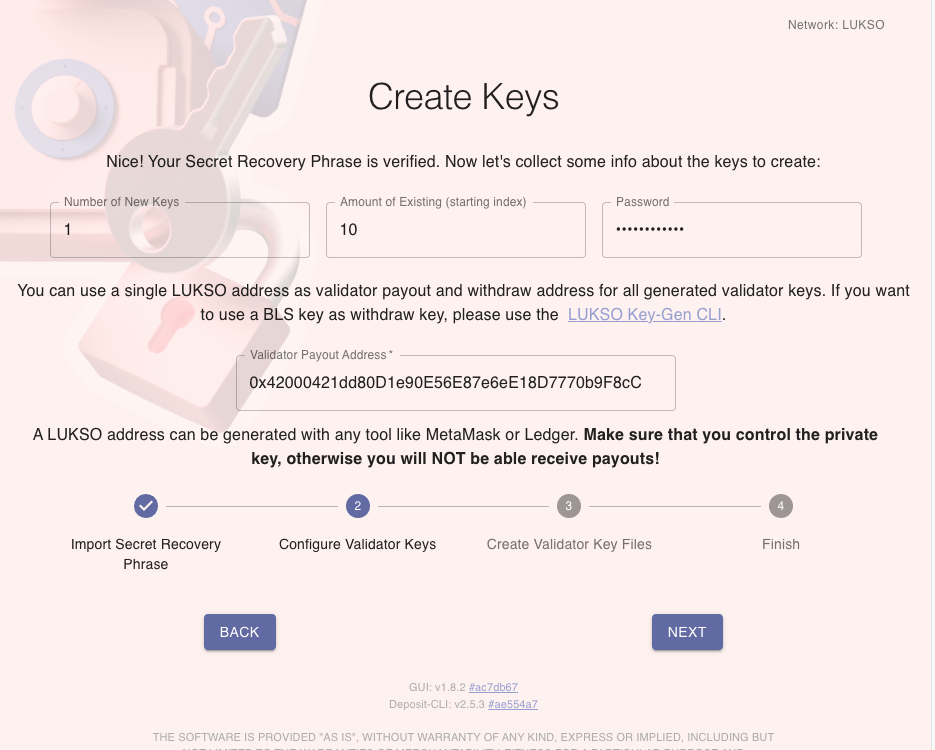
Always ensure that your destination folder contains the following files:
deposit_data.json: This file is used to make deposit transactions during the Deposit Launchpad process.keystore.json: Each validator key has a corresponding keystore file, later used in the Validator Setup.